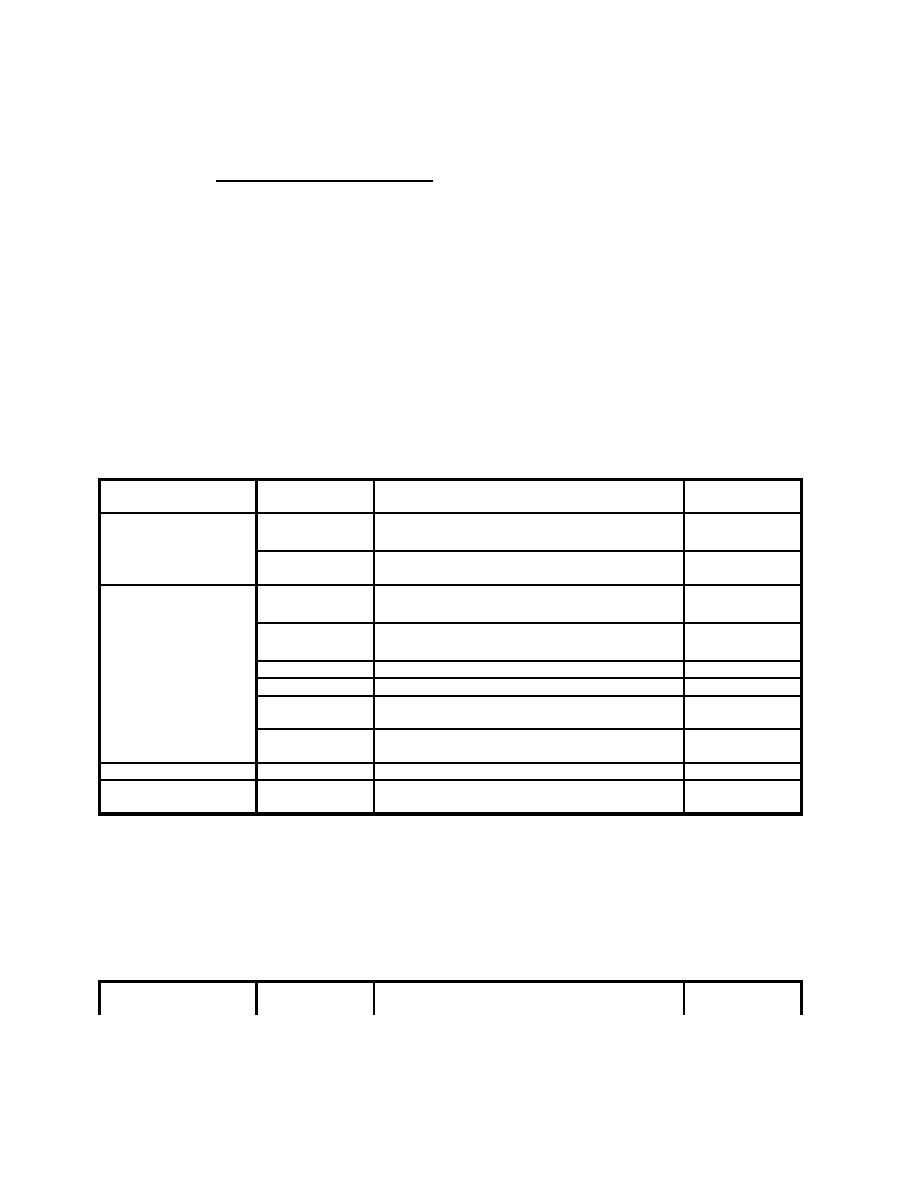

Custom Search
|
|

|
||
 MIL-HDBK-1013/12
5.4.1
Required Information. The following information is
required for a cross-section ballistic resistant thicknesses
procedure:
a) Ballistic Tactic Design Basis Threat (low, medium,
high, or very high). This information is determined
using Appendix D and is recorded on the Glazing
System Design Criteria Summary worksheet.
b) Cross-section type. Refer to Section 2 for
descriptions of cross-section types.
c) Worksheets (see Appendix B):
1) Cross-Section Evaluation (CSE)
Table 9
Typical Thicknesses for Medium Threat Severity Level Ballistic Resistant
Glazing Cross-Sections
Type
Thickness,
Cross-Section,
Figure
inch (mm)
inch (mm)
1-1/4 (31)
Figure F-4
1/2 (12) LAMa SGb, 1/4 (6) AIR,
Air Gap
1/2 (12) LAM POLYc
1-1/4 (31)
1/4 (6) LAM SG, 1/4 (6) AIR, 3/4
Figure F-5
(19) LAM POLY
1 (25)
Figure F-15
3/8 (10) LAM CSGd, 1/2 (12) LAM
POLY
1-3/16 (30)
Figure F-16
1/4 (6) SG, 3/8 (10) AGe, 3/8
(10) LAM POLY
Glass-Clad
1-3/16 (30)
7/8 (22) LAM AG, 1/4 (6) POLY
Figure F-17
Polycarbonate
1-3/16 (30)
7/8 (22) AG, 1/4 (6) POLY
Figure F-18
1-1/4 (31)
1/8 (3) SG, 5/16 (8) AG, 1/2
Figure F-19
(12) LAM POLY
1-5/16 (33)
1/8 (3) CSG, 5/8 (16) LAM AG,
Figure F-20
3/8 (6) POLY
Laminated Glass 1-3/4 (44)
1-3/4 (44) LAM AG
Figure F-28
Laminated
1-1/4 (31)
1-1/4 (31) LAM POLY
Figure F-31
Polycarbonate
a
Laminated
b
Strengthened glass
c
Polycarbonate
d
Chemically strengthened glass
e
Annealed glass
Table 10
Typical Thicknesses for High Threat Severity Level Ballistic Resistant Glazing
Cross-Sections
Type
Thickness,
Cross-Section,
Figure
inch (mm)
inch (mm)
53
|
 
|
|
 |
||